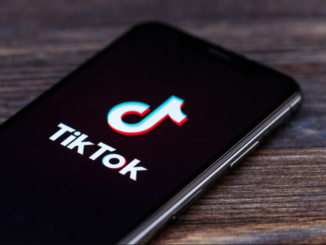
He doesn’t carry, nor accept, business cards. But in case he does accept one, like he did when we met at an industry session hosted by his employer, he’ll take a photo of the card using his phone. Then hand it back, so that “another tree doesn’t get cut for you to print another card”. And being keen on environmental conservation is not the only unique aspect about him, for he’s among the few people I’ve met who’ve been (fortunate enough to be) employed by the same company during three different periods.
Here now is Pratik Roy, the Modern Workplace and Security Business Group Lead for Microsoft Middle East and Africa (pictured), a position which sees him manage teams is North, West, East and Southern Africa as well as Levant and Pakistan. Read on as he shares highlights about his life, career and insights on various industry trends…
QUESTION: Who is Pratik Roy? Give us some background about yourself.
Pratik Roy (PR): Pratik Roy is a son, a proud father, husband, a friend to my colleagues and team, a brother to my friends as well as a trusted advisor to my customers and partners.
Q: As the Business Group Director in charge of Security and Modern Workplace, what does your job involve?
PR: My role is very rewarding and I say this because in my job I get to work with our product teams to understand the strategic visions of the solution…share the vision with our teams and enable them to reach out to our customers and partners to help transform and grow their businesses so that they are able to provide value to their shareholders, customers and employees. They can do this in a safe and secure environment protected by Microsoft’s Security solutions. If I was to summarize my role into one word…it would be Freedom.
Q: Growing up, did you dream of a career in the IT industry? What made you choose a career in the IT industry?
PR: Growing up, I dreamt of being an Engineer (thinking I will drive trains), then later learnt quickly that I was destined to be an Engineer like my father, just not the one driving trains. The choice of IT came just before I joined the university as I was always fascinated by computers and software. After 21 years in the industry, I can safely say I dreamt of being an Engineer and now I Engineer Digital Transformation for our customers.
Q: Who do you look up to for inspiration in both your personal and professional life and why?
PR: I look up to my parents since, who I am today is a reflection of what they instilled in me as virtues and values. On having an individual who I draw inspiration from…I would say none because I draw inspiration from deeds and not people. If a deed done brings about change and impacts life our lives, then I am inspired.
Q: This is your third stint at Microsoft looking at your professional profile. What has always attracted you back to Microsoft even after you leave and move to a different employer?
PR: The passion Microsoft has for its customers, partners and the society in general. And I am also passionate about our solutions, how they impact individuals and organizations to do more.

Q: According to an infographic shared by Microsoft, cyberattacks cost the Kenyan economy Kshs 29.5 billion in 2018. Which sectors (or industries) were affected by these cyberattacks and suffered the reported loses?
PR: Refer to the attached infographic for more details.
Q: The document also states that worldwide spending on AI solutions is expected to grow to $46 billion by 2020, with 25% of this growth being in banking and security. As relates to Microsoft, how are your customers (and partners) from the financial services industry aware of such trends and presence of these solutions?
PR: Education is an ongoing process. The bag of tricks attackers are using to get at businesses’ sensitive information is only getting bigger. We have a team that is constantly monitoring these trends and as a trusted partner of these organizations, we continue engaging (and educating them) during our meetings and share these new trends with them.
Q: During the recent Microsoft Cybersecurity forum in Nairobi, you noted that devices and their use is going to be a key concern as relates to cybercrime going forward. Which are some of the solutions from Microsoft which can help corporates address this issue in this era of BYOD?
PR: Devices will tend to be the entry point to access data both personal and corporate. Device access is through the individual’s identity hence protecting the identity becomes paramount and the data on the devices plus on the cloud services the device connects to. Microsoft’s philosophy of security is based on 4 pillars, namely; Identity and Access Management, Information Protection, Threat Protection and Security Management. Using our security stack, we can address the various requirements of each pillar mentioned earlier to improve the security posture of our customers.
Q: Having been in the ICT industry since 1999, holding various senior roles in a number of countries and regions, what transformations have you witnessed along the way and how important have they been in shaping your career? Where do you see yourself in the next 5 years?
PR: I always equate being an IT professional to a doctor, we always need to stay ahead through continuous learning. During the last 21 years I have seen many trends emerge…some disappear or evolve into what we see today. A couple of technology trends will exist for the long term and will keep refining with time among them Artificial Intelligence, Cybersecurity, Social, Endpoints (Devices, Wearables) and Cloud by extension as a service being at the center. I see myself building my capabilities further in the Cybersecurity domain.
Q: What’s your overall advice to individuals as well as both corporate and public sector organizations when it comes to addressing IT security issues within their organizations?
PR: When it comes to security, I would advise that we take position of already compromised and zero trust. Follow the Cyber Kill Chain of IDENTIFY – Identifying our security vulnerabilities, PROTECT – Protect the assets by securing the vulnerabilities identified, DETECT – detect where there is a breach or an attempted breach, RESPOND – respond to the threat and finally RECOVER – Recover from the threat.
Q: If you’re not working in your current job, what would you rather be doing, either as a hobby or professional undertaking?
PR: On a personal capacity, I would work in academia transferring the knowledge I have gathered over the last 21 years and professionally, I would look to working with organizations as an external consultant, bringing in checks and balances to their Cybersecurity strategy.
Q: Any final comments?
PR: I read a quote a few days ago: “When was the last time you did something for the First Time”. I have made this my life’s mantra and invest in learning. I would encourage the readers to do the same. There is no short cut to success.




Be the first to comment